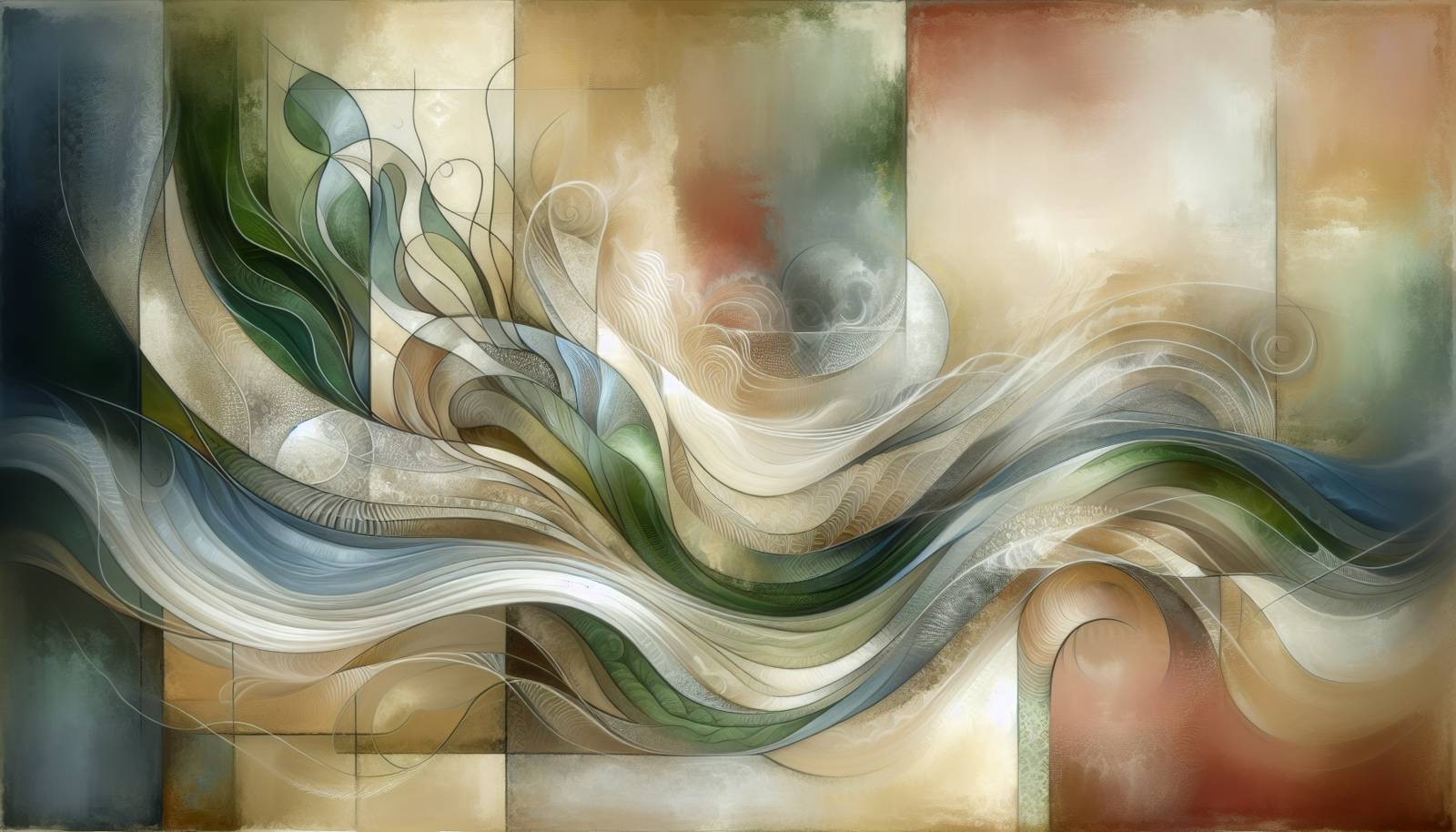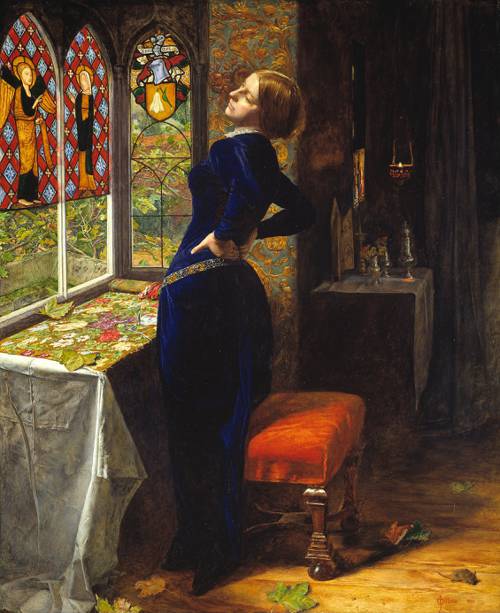
FAQ About The Influence of Pre-Raphaelite Art on Modern Visual Culture

What is Pre-Raphaelite art?
Pre-Raphaelite art refers to the style and works produced by the Pre-Raphaelite Brotherhood, a group of English painters, poets, and critics founded in 1848. The group sought to return to the detail, intense colors, and complex compositions that preceded the high Renaissance painter Raphael. Their work is characterized by its attention to detail, vivid colors, and themes often drawn from literature, mythology, and religion.

How did Pre-Raphaelite art influence modern visual culture?
Pre-Raphaelite art has significantly influenced modern visual culture, especially in the realms of fashion, digital media, and contemporary art. Their emphasis on vivid color and intricate detail has inspired graphic design and photography. Additionally, the romantic and mythological themes often seen in Pre-Raphaelite works continue to resonate with contemporary artists and are frequently referenced in digital media, including film and video games.

Which modern fashion designers are inspired by Pre-Raphaelite art?
Modern fashion designers such as Alexander McQueen and Vivienne Westwood have drawn inspiration from Pre-Raphaelite art, particularly its romantic and historical elements. These designers have incorporated flowing garments, intricate patterns, and the use of rich, saturated colors reminiscent of Pre-Raphaelite paintings into their collections.

What characteristics of Pre-Raphaelite art are visible in contemporary digital media?
Contemporary digital media often reflects Pre-Raphaelite art through the use of bright, saturated colors and complex, detailed compositions. The narrative and emotive qualities of Pre-Raphaelite works can be seen in video games, movies, and digital illustrations, where storytelling and visual intricacy are key elements.

How does Pre-Raphaelite art influence contemporary art exhibitions?
Contemporary art exhibitions sometimes showcase the influence of Pre-Raphaelite art by exploring similar themes or employing similar visual techniques. These exhibitions may focus on beauty, mythology, and narrative storytelling, reminiscent of the Pre-Raphaelite approach. Modern artists who create detailed and symbolically rich compositions often credit the Pre-Raphaelites as an influence.

Are there any permanent exhibitions of Pre-Raphaelite art in modern museums?
Yes, many modern museums, especially in the UK, have permanent exhibitions dedicated to Pre-Raphaelite art. Notably, the Tate Britain in London and the Birmingham Museum & Art Gallery have extensive collections of Pre-Raphaelite art, offering a glimpse into the vivid detail and complex themes that continue to influence modern visual culture.

What iconic works of Pre-Raphaelite art continue to impact modern aesthetics?
Iconic works such as "Ophelia" by John Everett Millais and "The Lady of Shalott" by John William Waterhouse continue to influence modern aesthetics. These paintings are celebrated for their lush imagery and detailed depictions of literary themes, inspiring modern artists in various fields from fine arts to digital creations.

How are Pre-Raphaelite themes integrated into video games?
Pre-Raphaelite themes are integrated into video games through narrative complexity, romanticism, and visual opulence. Games often include detailed character designs and environments, rich colors, and storytelling elements that draw from mythology and literature, echoing Pre-Raphaelite art's focus on emotive and evocative imagery.

What is the connection between Pre-Raphaelite art and film?
Pre-Raphaelite art's influence can be seen in the cinematic realm through its thematic focus and visual style. Many filmmakers draw on its romantic and mythical elements, lavish costumes, and dramatic use of color. Films with historical or fantastical themes often mirror the storytelling style of Pre-Raphaelite art.

How do Pre-Raphaelite influences appear in modern home decor?
Pre-Raphaelite influences appear in modern home decor through the use of lush textiles, detailed patterns, and vibrant color palettes. Themes such as nature, mythology, and romanticism from Pre-Raphaelite art are also reflected in decorative elements like wallpaper, furniture, and artwork within interiors that aim for an elegant and timeless aesthetic.

Can you name some contemporary artists inspired by the Pre-Raphaelites?
Contemporary artists such as Kehinde Wiley and Thomas Kinkade have shown inspiration from the Pre-Raphaelites. They often incorporate lush detailing and vibrant color schemes, with Wiley further integrating historical themes and portraiture reminiscent of Pre-Raphaelite style into his modern works.

What role did Pre-Raphaelite art play in the revival of traditional techniques in contemporary arts?
Pre-Raphaelite art played a significant role in the revival of traditional techniques by inspiring artists to return to meticulous detail and handcrafted quality. Techniques such as glazing, layering colors, and creating detailed compositions are emphasized in contemporary art, echoing the Pre-Raphaelite commitment to craftsmanship.

Why are Pre-Raphaelite themes popular in modern fantasy art?
Pre-Raphaelite themes are popular in modern fantasy art due to their romanticism, mythical storytelling, and dreamlike aesthetic. These qualities resonate with fantasy artists who seek to create immersive worlds and characters that capture the imagination, drawing on fairy tales, legends, and medieval romances that the Pre-Raphaelites frequently explored.

How do the Pre-Raphaelites influence contemporary photography?
Contemporary photographers are influenced by the Pre-Raphaelites through their attention to detail, use of vivid color, and thematic storytelling. Photographers may recreate the lush, complex scenes and emotive subjects typical of Pre-Raphaelite paintings, often incorporating elaborate costumes and settings to achieve a similar mood and depth.

Have digital art platforms embraced Pre-Raphaelite styles and themes?
Yes, digital art platforms have embraced Pre-Raphaelite styles and themes. Many digital artists reinterpret Pre-Raphaelite aesthetics by utilizing software to capture the vivid colors, intricate details, and romantic themes, blending traditional influences with modern technological capabilities.

How has social media contributed to the resurgence of interest in Pre-Raphaelite art?
Social media platforms have contributed to a resurgence of interest in Pre-Raphaelite art by making it more accessible to a global audience. Hashtags and digital galleries allow art lovers to share and discover works inspired by or directly from the Pre-Raphaelites, sparking interest and discussions that revive their influence in contemporary culture.

What are common misconceptions about Pre-Raphaelite art?
A common misconception about Pre-Raphaelite art is that it is solely a medieval revival style. While the Pre-Raphaelites did draw from medieval themes, their work also heavily incorporated not only modern (for their time) narratives and a response to rapid industrial changes, aiming to return to more meaningful and heartfelt art.

Is there a connection between Pre-Raphaelite art and modern sustainable fashion?
The Pre-Raphaelite movement's appreciation for handcrafted quality and natural beauty resonates with modern sustainable fashion. Designers inspired by Pre-Raphaelite principles often emphasize artisanal craftsmanship, natural materials, and timeless styles, paralleling the movement's commitment to meaningful, ethically produced works.

How does Pre-Raphaelite art influence modern graphic design?
Pre-Raphaelite art influences modern graphic design through its rich use of color, elaborate patterns, and detailed compositions. Designers often draw from the intricate aesthetics and romantic themes of Pre-Raphaelite works to create visually compelling and emotive designs in print and digital media.

What role do Pre-Raphaelite landscapes play in today's environmental art?
Pre-Raphaelite landscapes play a role in today's environmental art by emphasizing the beauty and sanctity of nature. Their idealized depictions of natural settings encourage a modern appreciation for environmental preservation and inspire artists who focus on the interplay between humanity and nature in their work.
